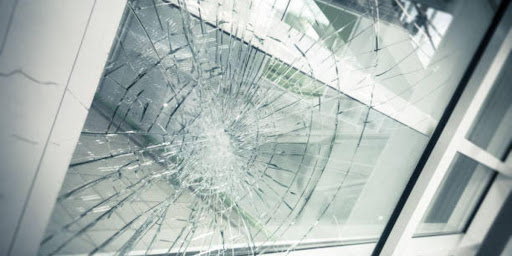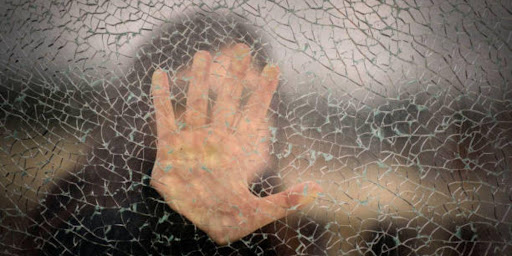Power Articles
Industry Elevating Content
Incorporating Safety Glass in Window and Door Projects - Benefits and Applications

PowerArticles
Sept. 4th, 2023
In today’s ever-evolving construction landscape, the integration of safety glass has emerged as a pivotal consideration for companies specializing in window and door installations. As the importance of safety and sustainability continues to gain prominence, understanding the benefits and applications of safety glass is paramount.
This article delves into the myriad advantages of incorporating safety glass into your projects, shedding light on how this innovative material not only enhances security but also adds a touch of elegance to residential and commercial spaces. From its unparalleled durability to its energy-efficient properties, we explore the diverse ways in which safety glass elevates the standards of modern construction, ensuring that your installations stand out in terms of both safety and style.
Understanding Safety Glass
Safety glass is a critical component in window and door projects, ensuring the safety and security of buildings and their occupants. This section delves into the fundamental aspects of safety glass, including its types, properties, and legal requirements.
Types of Safety Glass
- Tempered Glass: Tempered glass is created through a process of rapid heating and cooling, resulting in increased strength and shatter resistance. When broken, it fractures into small, relatively harmless pieces, reducing the risk of injuries.
- Laminated Glass: Laminated glass consists of two or more layers bonded together with an interlayer, typically made of polyvinyl butyral (PVB). This construction holds the glass together upon impact, preventing it from shattering. Laminated glass offers superior security and sound insulation.
- Wired Glass: Wired glass contains a wire mesh embedded within the glass to enhance its fire-resistant properties. While it can withstand high temperatures, it is less impact-resistant than tempered or laminated glass and is often used in fire-rated applications.
Properties of Safety Glass
- Strength and Durability: Safety glass boasts enhanced strength, reducing the likelihood of breakage under normal circumstances. This durability contributes to its longevity and reliability in various settings.
- Impact Resistance: Safety glass, particularly tempered and laminated variants, offers exceptional impact resistance, making it suitable for areas prone to accidents or vandalism.
- UV Protection: Many safety glass types provide UV protection, shielding interiors from harmful ultraviolet rays that can damage furnishings and affect occupant health.
Legal Requirements and Safety Standards for Safety Glass
Companies involved in window and door installations must adhere to specific legal requirements and safety standards governing the use of safety glass. These standards vary by region but generally aim to ensure that safety glass is used appropriately in building projects to minimize risks to occupants.

Benefits of Incorporating Safety Glass
Incorporating safety glass into window and door projects offers a multitude of benefits for companies specializing in installations. Here are some of the advantages of opting for safety glass, emphasizing why it’s a valuable choice for businesses in the industry.
Improved Safety and Security:
Safety glass significantly reduces the risk of injuries. Unlike regular glass, when it shatters, it breaks into small, less hazardous pieces. This feature is crucial, especially in environments where accidents might happen. Additionally, safety glass enhances security by making it more challenging for intruders to break in. Its durability and resistance to forced entry bolster a property’s defense against break-ins, adding an extra layer of protection.
Energy Efficiency:
Safety glass contributes to improved energy efficiency. Its insulating properties help maintain stable indoor temperatures by reducing heat transfer. This translates to lower energy bills as the need for heating or cooling is minimized. Businesses can not only provide a safer environment but also help clients save on their energy costs, making it a win-win situation.
Noise Reduction:
Safety glass offers excellent acoustic insulation. This quality reduces noise infiltration, making indoor spaces quieter and more comfortable. Whether it’s a residential project in a noisy neighborhood or a commercial building in a bustling city, safety glass can significantly enhance the indoor experience for occupants.
Aesthetic Options:
Companies can benefit from the wide range of customization and design versatility offered by safety glass. It can be tailored to match specific aesthetic preferences, allowing businesses to cater to diverse customer tastes. Furthermore, incorporating safety glass can enhance the curb appeal of any property, creating an attractive selling point for potential clients.

Applications of Safety Glass in Window and Door Projects
Safety glass is a vital component in modern construction, offering enhanced protection and durability. Incorporating safety glass in window and door projects yields numerous benefits across various applications.
Residential Applications:
- Safety Glass in Residential Windows: Safety glass ensures protection against accidents and break-ins. Its shatter-resistant properties safeguard homeowners and reduce the risk of injury in case of glass breakage.
- Patio Doors and Sliding Doors: Patio and sliding doors often use safety glass to enhance security while providing unobstructed views. This glass type prevents shattering into sharp shards, mitigating injury risks.
- Shower Enclosures: In bathrooms, safety glass is a popular choice for shower enclosures. It minimizes the risk of injuries from accidental impacts and ensures a sleek, transparent appearance.
Commercial Applications:
- Storefronts and Commercial Windows: Safety glass in commercial windows and storefronts is crucial for preventing break-ins and protecting valuable assets. It also contributes to energy efficiency by reducing heat transfer.
- Office Partitions: Safety glass partitions create an open and professional workspace while maintaining safety standards. They enhance natural light distribution and provide sound insulation.
- Entry Doors in Commercial Buildings: Entry doors often feature safety glass to withstand heavy foot traffic and maintain a welcoming appearance. This glass type ensures longevity and security in commercial environments.
Industrial Applications:
- Safety Glass in Industrial Settings: Industrial facilities utilize safety glass for various purposes, such as protecting workers from hazardous machinery, chemicals, and debris. It reduces the risk of accidents and complies with safety regulations.
- Machinery and Equipment Protection: Safety glass shields machinery control panels, preventing damage and ensuring uninterrupted operations. It also enhances worker safety by creating a barrier between employees and potentially dangerous equipment.
Automotive Applications:
- Safety Glass in Vehicles: Automobiles incorporate safety glass for windshields, side windows, and rear windows. It prevents glass from shattering upon impact, reducing injury risks during accidents.
2. Benefits for Driver and Passenger Safety: Safety glass enhances vehicle safety by ensuring clear visibility and structural integrity. It protects occupants from flying glass fragments during collisions.

Conclusion
Incorporating safety glass in window and door projects emerges as a paramount consideration for companies engaged in installation, offering a multifaceted range of benefits and applications that extend beyond conventional aesthetics. Beyond enhancing structural integrity and security, safety glass mitigates the risk of breakage, potential harm, and costly replacements, fostering customer trust and satisfaction. Furthermore, its versatility finds utility in diverse architectural contexts, from residential to commercial, presenting an opportunity for firms to expand their market reach and reputation as purveyors of not just windows and doors, but also peace of mind.
Published By
PowerArticles
Sept. 4th, 2023